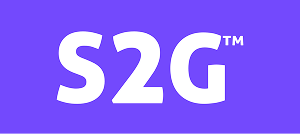Execution Is the New Funding. Here’s Why Founders Keep Getting It Wrong.

Build, manage, and grow your big
thing with Sketch To Growth™️!
Let’s cut through the noise: early-stage founders are obsessed with raising money. “If we only had $xxx,xxx, we could ______!” I file that in the same drawer as “with just 1% of the market, we’d be worth $_____!” (as if getting 1% is super easy!) As early-stage founders, we make the mistake of thinking capital is the cure-all. It’s not. In fact, capital is almost always an accelerant, an amplifier to all that is good AND bad in your early-stage org. More companies have failed because of excess capital than have grown because of it.
Capital doesn’t build your product, close your deals, or scale your go-to-market. Execution does. How you deploy resources, build systems, and learn faster than the market – that’s the real engine of growth.
Here’s where operator networks, like S2G™, enter the picture. Not as advisors collecting equity for pep talks. As hands-on executors who’ve built, scaled, and stumbled before – and have the scars and playbooks to show for it.
Instead of defaulting to bigger checks, imagine plugging into a bench of fractional leaders who’ve already built what you’re trying to build. A CMO who’s launched your type of product a dozen times. A team with ready-to-go investor pipeline workflows and onboarding funnels. That’s not mentorship. That’s leverage.
The Multiplier Effect of Operators
The smart platforms – venture studios, growth shops, fractional exec networks – have figured this out. They match companies with proven operators who compress the time it takes to reach traction. They don’t just advise. They execute. And every hour of execution adds compounding value.
This isn’t about full-time hires. It’s about just-in-time leadership. Plug in what you need, when you need it. No bloated payroll. No cultural misfit. No six-month onboarding. Just output.
And every experiment they run? Becomes a reusable playbook. Those playbooks? Become assets. Not the kind that show up on your balance sheet – but the kind that make your balance sheet worth looking at.
Shared Infrastructure, Shared Wins
Now take that model and scale it across multiple startups. Each company gets faster not just from its own experiments, but from everyone else’s. A founder unlocks a new channel, and suddenly four others follow. A new pricing model gets tested and validated in days. You’re not alone in the jungle – you’re part of a fleet.
That’s how network effects show up in execution. Shared playbooks. Shared GTM strategies. Shared intros. The result? Faster customer acquisition, lower burn, better investor optics.
Investors see these ecosystems as de-risked growth labs. Founders inside them get treated as more fundable – not just because of what they know, but because of what their network’s already proven.
Scale Doesn’t Come From Genius. It Comes From Systems.
Every founder says they’re building the plane while flying it. The good ones build a fleet while writing the manual. Operator networks bring the manual.
Not just big ideas – repeatable systems. Think email drip campaigns that convert. SDR playbooks that lower CAC. Fundraising narratives that hit every investor objection before they ask. You don’t need brilliance. You need replicability.
And here’s the kicker: this doesn’t just save time. It saves money.
The New Economics of Experimentation
In the old world, growth meant trial-and-error – heavy on the “error.” Hire. Spend. Wait. Hope. In the new world, operator-led experiments are pre-tested, pre-tuned, and surgically executed.
Let’s say someone already cracked the code on content syndication in your niche. You don’t need to start from scratch. You copy, paste, iterate. Now you’re learning at 10x speed and 1/10th the cost.
That’s what leverage actually looks like.
Execution as a Utility
Here’s the truth: cloud computing revolutionized startups by turning infrastructure into an on-demand utility. Operator networks are doing the same for executive horsepower.
Rent the expertise. Keep the equity. Redirect your capital into product, not overhead. Execution becomes a service – and founders become smart allocators, not tired firefighters.
But there’s a catch: leverage only works if you know what you need.
Start With a Self-Audit
Before you plug in an operator, look in the mirror. Do a 90-day execution gap analysis. Where are you slow? What’s broken? Where is your team overmatched?
Map those gaps to operator capabilities. Then – crucially – test before you marry.
Run a 60–90 day sprint. Set KPIs. Treat it like a trial. Measure output, not just vibes. Does your CAC improve? Does your pipeline expand? If yes – scale it. If not – move on.
This isn’t outsourcing. It’s precision augmentation. And founders need to own the steering wheel while letting operators tune the engine.
You Don’t Lose Control. You Gain Speed.
Done right, this model preserves what matters – culture, conviction, and founder-led decision making – while embedding best-in-class execution into your DNA.
The future belongs to startups that treat expertise as infrastructure, not headcount. Operator networks don’t dilute your ownership – they amplify it. They turn your vision into velocity.
The Real Question
It’s not should you use external help. It’s how you structure it.
Founders who win will:
Diagnose before they deploy.
Align incentives through sprints, not salaries.
Retain control while gaining leverage.
Because scaling isn’t about doing more. It’s about doing smarter.
The fastest way to turn ambition into acceleration?
Treat execution like a utility – and plug into an operator network that’s already built the future you’re chasing.



